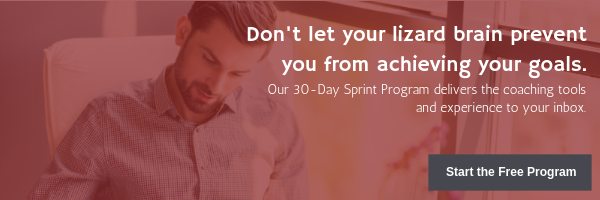
It is particularly difficult to sustain a new action or a new habit if we cannot change the way we think. And changing the way we think about something is one of the most challenging things you may ever do in your life.
To begin a new habit is to end an old one and this is simply not easy on anyone. One of the few techniques I have seen that leads to authentic and sustainable change is to begin with making an unbiased observation about our current thinking. Here at Rewire we refer to this as metacognition.
We have written about the benefits of metacognition before and you can certainly review some of our past articles to reacquaint yourself with the topic. Today, however, I would like to go beyond a conceptual understanding to offer a couple tangible strategies for practicing metacognition. If we don’t make them tangible, then concepts remain somewhat esoteric and not very helpful. So here we go:
Two uncomplicated strategies to practice metacognition:
1. Treat curiosity like your “Yellow Brick Road.”
Curiosity – authentic curiosity – is a wonderful gateway to effective metacognition. Think about where you’ve practiced curiosity in the past. It could have been in grade school. It could have been that last thing that sent you to Google to try to learn more. That’s all we’re talking about here — just turned on yourself. So it’s really not complicated.
Whenever you find yourself feeling strongly (and unfortunately this works well for negative emotions like sadness, stress, anger etc…), simply ask yourself “why?” and then let your curiosity take over. Don’t ask “why?” about your emotions in order to judge them as good or bad, but rather from a simply curious point of view.
Now, be prepared. Your lizard brain will offer you a very short and precise reason and it is usually external: “Because that person did this to me,” or “this circumstance happened this way.” But those aren’t complete answers to why you feel the way you do, and they typically serve to just to justify (mark them as “good” or “right.”) the emotion. But, remember that we’re not interested in right/wrong/good/bad at this point; just simple curiosity for the sake of gaining insight. Follow that curiosity.
2. Stay lighthearted about it all.
Eventually, once curiosity yields insights about your feelings and actions, you’re going to recognize a gap between what you believe to be true and how you are acting (and we all have these gaps, if we’re being honest). There is a huge temptation then to judge yourself as though that gap is part of your identity. I want to tell you that that’s not necessary, or necessarily helpful, for you to get better.
Recall that I started out this article - as I start many of my articles - saying that change is not easy. Well, if that’s so, why add any extra angst and judgement to it?! What I’ve seen as I’ve worked with people is that the judgment and angst we sometimes add to the process of change makes us less likely to stick with the change process at all.
So, instead, observe yourself and treat yourself gently. This allows for greater learning and subsequent greater results. In other words, we all need to lighten up. Don’t take life so seriously. Perhaps even have the awareness to smile and laugh at some of those gaps. This will give way to greater learning and keep you on the path towards growth.
There you have it. Two practical strategies to practice metacognition. Please keep in mind that these are not necessarily easy things to do, but I’ve seen them produce growth both in my thinking and business as I practice. Go get curious.




